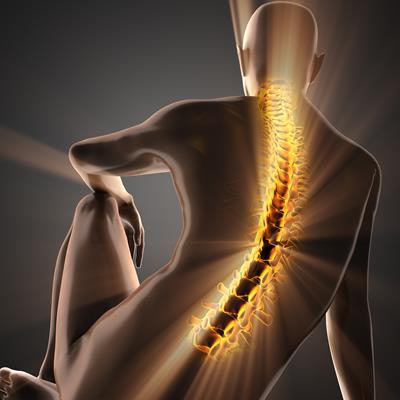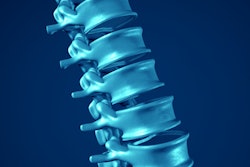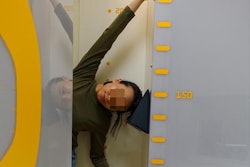
An artificial intelligence (AI) algorithm can automatically measure the Cobb angle on chest x-rays, yielding a promising level of performance for diagnosing scoliosis from exams performed for lung cancer screening, Chinese researchers reported in an article published online August 24 in the European Spine Journal.
After developing a method based on two convolutional neural networks (CNNs), researchers led by Dr. Yaling Pan of Shanghai Jiao Tong University School of Medicine in Shanghai found their technique was reliable and highly sensitive for diagnosing scoliosis.
"Therefore, the computer-aided method [has] potential ... for automatic diagnosis of scoliosis on chest x-rays from lung cancer screening," the authors wrote.
Scoliosis is a common finding on chest x-rays performed for lung cancer screening. The Cobb angle has been used as objective parameter for quantifying the severity of scoliosis on coronal radiographs, with a Cobb angle of greater than 10° being considered clinically significant for a scoliosis diagnosis. However, previous studies in the literature have reported that reader variability ranges from 3° to 10° for calculating the Cobb angle. What's more, manual measurements are time-consuming to perform, especially in scoliosis screening, according to the authors.
In an attempt to reduce reader variability and improve efficiency, the researchers sought to develop a fully automatic method for measuring the Cobb angle and diagnose scoliosis. Their approach is based on two steps. First, two Mask R-CNNs separately segment the spine and vertebral models on the x-rays. Next, postprocessing algorithms determine the Cobb angle from the segments of the spine and vertebral bodies.
They tested their approach on 248 chest x-rays that had also been measured separately by two experienced radiologists. Overall, the radiologists had an intraobserver interclass correlation coefficient (ICC) of 0.941 and a mean absolute difference of 2.2°, as well as an interobserver ICC of 0.89 and mean absolute difference of 2.9°. In comparison, the computer-aided method and the radiologists had an ICC of 0.85 and a mean absolute difference of 3.3° -- a result that was slightly better than previously developed automatic methods for measuring the Cobb angle.
| Performance of AI model for diagnosing scoliosis on chest x-rays | |
| Computer-aided method | |
| Sensitivity | 89.6% |
| Specificity | 70.4% |
| Accuracy | 87.5% |
| Positive predictive value | 96.1% |
| Negative predictive value | 45.2% |
"These results indicated that the computer-aided method had good reliability for Cobb angle measurement on chest x-rays," the authors wrote.
The researchers noted they expected to improve their technique's specificity in the future by increasing the variability of the vertebral appearance during the learning procedure of the Mask R-CNN model. They also highlighted the speed of their method, which requires an average processing time of less than 15 seconds.
"It was implied that the computer-aided method could be used in real-time scoliosis diagnosis during lung cancer screening using chest x-rays," they wrote.




















